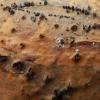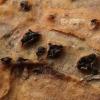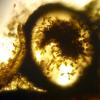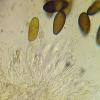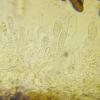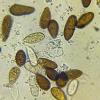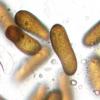
13-01-2026 08:49
 Danny Newman
Danny Newman
Coccomyces sp. on fallen Rhododendron leavesPretty

13-01-2026 08:43
 Danny Newman
Danny Newman
Tricladium varicosporioides on indet. decorticate

12-01-2026 22:02
Ethan CrensonHello all, I am hoping someone will have some ins

13-01-2026 07:57
 Danny Newman
Danny Newman
cf. Bombardia on indet. decorticate woodAppalachia

13-01-2026 07:51
 Danny Newman
Danny Newman
Atrocalyx sp. on indet. herbaceous stemAppalachian

13-01-2026 07:28
 Danny Newman
Danny Newman
Chlorociboria glauca on indet. decorticate logThe

13-01-2026 07:14
 Danny Newman
Danny Newman
Neodasyscypha cerina on indet decorticate logThe S

11-01-2026 20:35
Hello.A very tiny pyrenomycete sprouting sparsely

12-01-2026 05:24
 Danny Newman
Danny Newman
Cyathicula coronata on Urtica dioicaCataloochee Di

15-12-2025 11:49
 Danny Newman
Danny Newman
ITS sequences from the following two collections B
Hello
They grew on the bark of dead pine (Pinus sylvestris). Usually, there are shown on pine needles so I have some doubts?
Another species occurring on this substrate is D. Sapinea. However, according to literature, it should have much longer spores?
Spores:
(30.2) 31.2 - 39.5 (39.6) × (14) 14.7 - 15.9 (18.6) ?m
Q = (1.7) 2 - 2.57 (2.6); N = 8
Me = 34.8 × 15.7 ?m; QE = 2.2
I marked well?
Greetings
Mirek

You collected an asexual morph, so you observed conidia.
The genus Diplodia has a lot of cryptic species. I am afraid that Diplodia sapinea ss. lato is one of those species. Indeed, I collected similar species without ornamentation as well as species with verruculose conidia (see photo) on Pinus.
Greetings,
Bernard
Earlier I thought like you. Now, however, I took advantage of:
The BotrySphaeriaceae: General and Species Known from Culture.
This publication contains a key to this type:
***
13. Conidial length exceeding 50 µm (up to 54 µm) .................. D. sapinea
13. Conidial length never exceeding 50 µm (up to 41.5 µm) ......... D. scrobiculata
***
Because Conidia was definitely shorter than 50um, I recognized them for D. Scrobiculata?
On the pictures you can not see anyone, while Conidia during the observation under the microscope seem to be slightly rough.
Do you have any newer data on this topic?
Thank you, Bernard for a comment.
greetings
Mirek

So I think we should exclude that species.
Bernard
I do not know these species, which is why I asked for your opinion.
I only explain why I recognized this species for D. scrobiculata and not for D. sapinea.
Thank you again and best regards.
Mirek

"You collected an asexual morph, so you observed conidia."
... when I was a student I once learned: conidia = exomitospores
So, conidia are spores as well as ascospores are (meiospores).
Best, Lothar

I learned that anamorphs represent forms which propagate by means of mitoconidia resulting from mitosis. Anyhow, in literature the word 'conidium' is used since decades for a reproductive structure in asexual morphs. Using 'spores' in the context here could be misleading.
Bernard
